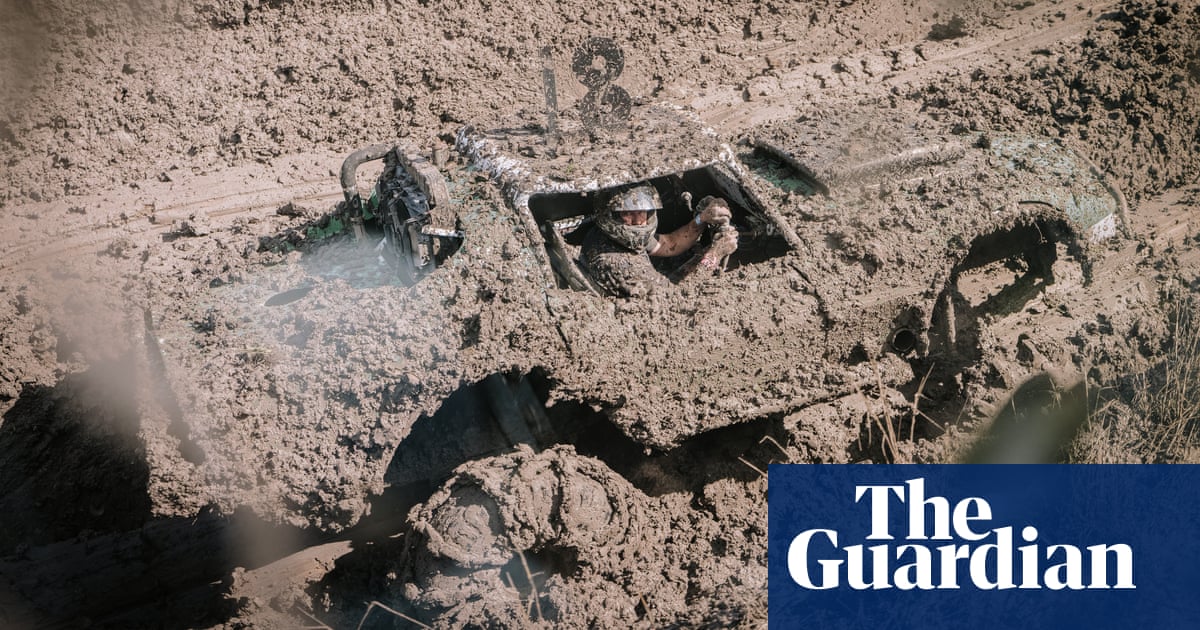On Sunday afternoon in the typically quiet village of Pallamallawa in New South Wales, the sound of V8 engines fills the air as colorful cars race towards muddy trenches at 80km/h. In a split second, mud erupts into the sky, covering everything in sight. Welcome to the thrilling world of mud bombing – but don’t mistake it for a race.
“It’s not a race; it’s called a mud trial,” explains Errol Carter, a respected figure in the sport. Mud trials feature heavily modified two-wheel drive cars designed to withstand harsh impacts as drivers tackle a series of muddy obstacles.
Errol Carter, a former panel beater turned disability support worker, resides on his property near Moree. “Until you have done it you can’t really understand it, it’s a real adrenaline rush,” he shares. Carter is a renowned mud-bombing champion, having secured numerous state titles.
It’s not a race; it’s called a mud trial
On his vast property near Moree, approximately eight hours’ drive northwest of Sydney, Carter explains the rules: “You’ve got to make it through those mud holes,” he states. It sounds simple – until it isn’t.
Teams earn points for maneuvering through trenches carved into the track’s straights. Points are deducted if a car gets stuck in the mud. In such cases, a co-driver quickly hooks a chain to a waiting tractor for a rescue – unless the car ends up overturned, leading to a longer wait. “It’s a real adrenaline rush,” Carter emphasizes. “Until you’ve experienced it, you can’t truly comprehend it.”
Mud in the blood: getting dirty at the 2024 NSW mud-bombing trials – video
The clash between machine and mud has been a part of Australian outback culture since the 1940s. What initially began as a casual activity at country fairs has evolved into a standalone, high-energy spectacle.
The costs associated with constructing and maintaining a “bomb” are high, while the rewards are minimal; the real prize lies in being crowned state or national mud bomber of the year.
To compete for this prestigious title, enthusiasts from remote towns like Walgett, Sarina, and Collarenebri participate in events five to six times a year, adhering to strict Speedway Australia regulations. Despite appearing chaotic to newcomers, there is a method to the madness.
Once a year, Pallamallawa becomes the epicenter of the mud-bombing world, hosting the fiercely contested NSW Mud Bomb of the Year title.
Recent heavy rainfall has created ideal muddy conditions, though it has posed a challenge for local volunteers preparing the track. The night before the event, the pit area is drained, trenches are filled, and final checks are conducted. Amid the last-minute rush, stories are shared, beers are enjoyed, and work extends late into the night.
At dawn, the roar of cars named Bruce, Little Devil, Madman, and Dato shatters the morning calm. Four classes of vehicles compete, with the modified V8s leading the pack. Adorned with massive chained tires and Mad Max-style makeovers, these mud beasts are crowd favorites.
The impact as the V8s charge into the mud holes sends large clumps of muck flying, earning the sport its nickname.
Many competitors come from long lines of mud-bombers – some now third generation – all united by their shared passion for mud. Both cars and expertise are passed down, with many veteran drivers offering guidance from the passenger seat during the trials on the best way to tackle the muddy pits.
It’s the competition and the friendships that keep it goingJack Earl
The recent addition of a junior category has helped preserve the tradition. Children as young as 10 now participate in modified 2.0-liter passenger cars, with additional safety measures in place.
Among the young competitors is 10-year-old Grace, supported by her parents Jordan and Pete, an experienced mud-bomber. “I feel free,” she exclaims when describing her high-speed approach to a mud hole. “It’s like I run the whole world.”
A modest $10 entry fee for spectators attracts families from near and far, with a sizable crowd gathered trackside for a full day of action.
As the day progresses, the mud holes deepen, making navigation through them a rare achievement. Meanwhile, in the pit area, a different type of chaos unfolds: cars and crews are washed down, and quick repairs are carried out. Steam rises from the many “bombs” pushed beyond their limits, resulting in an early end to the day for some.
Prizes have always been modest – what was once a meat tray or simply a trophy has now become a $1,000 reward for the overall winner, barely covering travel expenses for many. Yet the sport thrives, fueled by a genuine passion for this distinctive pursuit.
“It’s the competition and the friendships that keep it going,” states Jack Earl, a 60-year veteran. “I just love playing in the mud.”
For a few weekends each year, mud-bombers revel in this unique combination of freedom and excitement, carrying on the legacy of past generations. As Carter puts it, “It’s not blood in our veins; it’s mud.”
